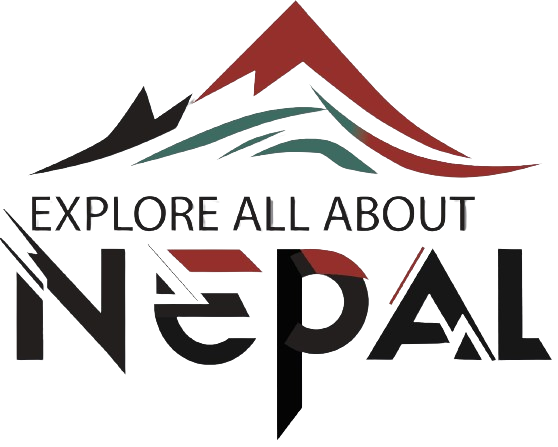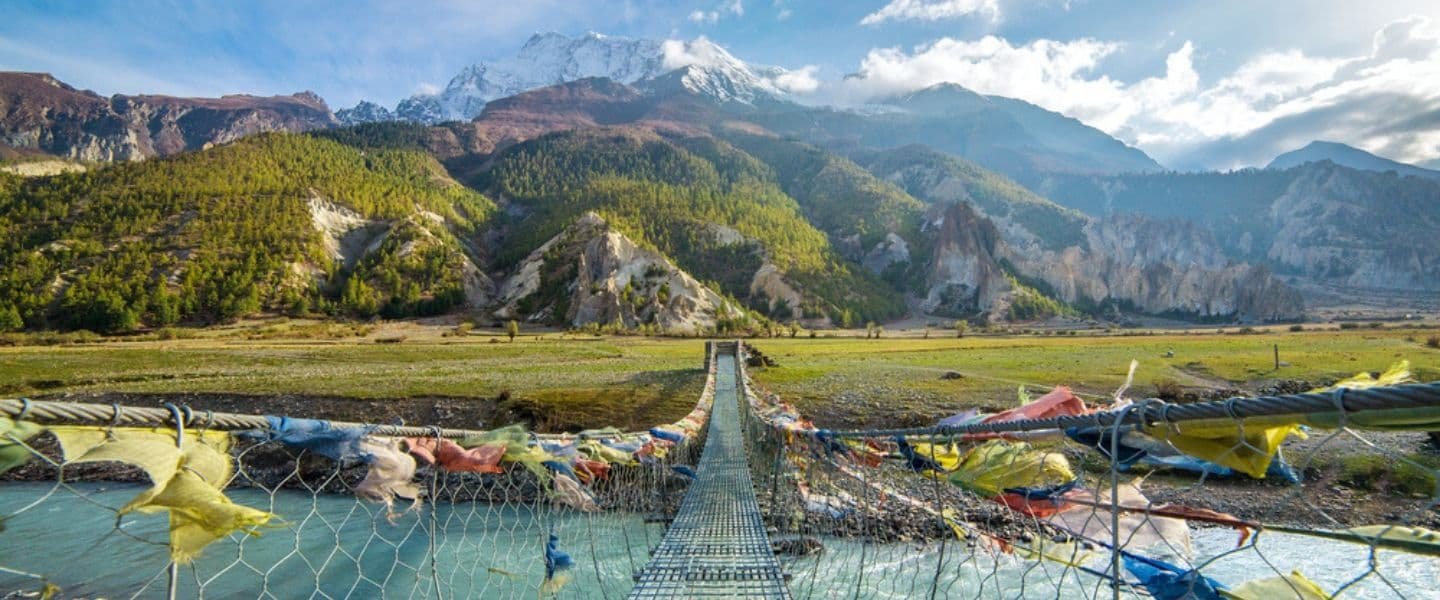Annapurna Circuit Trek, a gem in the Himalayas, is often heralded as one of the most iconic trekking routes in the world. Offering an unmatched blend of natural beauty, cultural diversity, and physical challenge, this trek should be on every adventure enthusiast’s bucket list. Spanning diverse landscapes, from lush subtropical forests to barren alpine terrains, the journey is as transformative as it is breathtaking. This guide will help you prepare for the Annapurna Circuit Trek with a detailed itinerary, essential tips, a breakdown of activities, estimated costs, and the best time to visit.

Why the Annapurna Circuit Trek?
- Diverse Landscapes: Experience everything from tropical jungles to arid high-altitude deserts.
- Cultural Immersion: Encounter a mosaic of ethnic communities like Gurungs, Thakalis, and Manangis.
- Iconic Peaks: Marvel at panoramic views of peaks like Annapurna I, Dhaulagiri, and Machhapuchhre.
- Thrilling Adventure: Cross the Thorong La Pass (5,416 meters), one of the highest trekking passes in the world.
- Hot Springs and Tea Houses: Relax in natural hot springs and enjoy the warmth of local hospitality.
Suggested Itinerary for the Annapurna Circuit Trek
Day 1: Arrival in Kathmandu (1,400 meters)
- Activities: Explore the bustling Thamel district, prepare trekking permits (ACAP and TIMS), and gather last-minute supplies.
- Accommodation: Hotel in Kathmandu.
Day 2: Drive from Kathmandu to Besisahar (800 meters)
- Travel Time: 6-7 hours by bus or jeep.
- Activities: Enjoy the scenic drive through lush hills and riverside villages.
- Accommodation: Tea house in Besisahar.
Day 3: Trek from Besisahar to Bahundanda (1,310 meters)
- Duration: 5-6 hours.
- Activities: Pass terraced rice fields, waterfalls, and small settlements.
- Accommodation: Tea house in Bahundanda.
Day 4: Bahundanda to Chamje (1,410 meters)
- Duration: 5-6 hours.
- Activities: Trek alongside the Marsyangdi River and cross suspension bridges.
- Accommodation: Tea house in Chamje.
Day 5: Chamje to Dharapani (1,960 meters)
- Duration: 6-7 hours.
- Activities: Enter the Manang region, with Tibetan-influenced architecture and culture.
- Accommodation: Tea house in Dharapani.
Day 6: Dharapani to Chame (2,710 meters)
- Duration: 5-6 hours.
- Activities: Walk through dense pine forests and catch the first glimpses of Annapurna II.
- Accommodation: Tea house in Chame.
Day 7: Chame to Upper Pisang (3,300 meters)
- Duration: 5-6 hours.
- Activities: Stunning views of Pisang Peak and dramatic changes in vegetation.
- Accommodation: Tea house in Upper Pisang.
Day 8: Upper Pisang to Manang (3,540 meters)
- Duration: 6-7 hours.
- Activities: Visit Braga Monastery and acclimatize to higher altitudes.
- Accommodation: Tea house in Manang.
Day 9: Acclimatization Day in Manang
- Activities: Short hikes to nearby viewpoints, visit Gangapurna Lake, and enjoy local Thakali cuisine.
- Accommodation: Tea house in Manang.
Day 10: Manang to Yak Kharka (4,050 meters)
- Duration: 4-5 hours.
- Activities: Trek through alpine meadows with views of Annapurna III and Gangapurna.
- Accommodation: Tea house in Yak Kharka.
Day 11: Yak Kharka to Thorong Phedi (4,525 meters)
- Duration: 4-5 hours.
- Activities: Prepare for the Thorong La Pass and enjoy stunning mountain vistas.
- Accommodation: Tea house in Thorong Phedi.
Day 12: Cross Thorong La Pass (5,416 meters) and Descend to Muktinath (3,800 meters)
- Duration: 7-9 hours.
- Activities: Experience the highlight of the trek, the challenging pass, and visit the sacred Muktinath Temple.
- Accommodation: Tea house in Muktinath.
Day 13: Muktinath to Jomsom (2,720 meters)
- Duration: 5-6 hours.
- Activities: Descend through the Kali Gandaki Valley.
- Accommodation: Tea house in Jomsom.
Day 14: Fly or Drive to Pokhara
- Travel Time: 20-minute flight or 8-10 hours by jeep.
- Activities: Relax by Phewa Lake and explore Pokhara.
- Accommodation: Hotel in Pokhara.
Day 15: Return to Kathmandu
- Travel Time: 6-7 hours by bus or jeep.
- Activities: Souvenir shopping and farewell dinner.
- Accommodation: Hotel in Kathmandu.
Day 16: Departure
- Activities: Fly back home or extend your stay in Nepal.
Activities Along the Trek
- Photography: Capture breathtaking landscapes and traditional villages.
- Wildlife Watching: Spot Himalayan Thar, blue sheep, and various bird species.
- Cultural Exploration: Visit monasteries, gompas, and local festivals.
- Relaxation: Soak in the Tatopani hot springs.
- Shopping: Purchase handicrafts and Tibetan artifacts in Manang and Jomsom.
Essential Tips for the Annapurna Circuit Trek
- Acclimatization: Spend extra days at higher altitudes to avoid Acute Mountain Sickness (AMS).
- Hydration: Drink plenty of water and avoid alcohol at higher altitudes.
- Layered Clothing: Prepare for temperature variations with thermal base layers, fleece jackets, and waterproof outer layers.
- Trekking Permits: Carry Annapurna Conservation Area Permit (ACAP) and Trekkers’ Information Management System (TIMS) card.
- Travel Insurance: Ensure your insurance covers high-altitude trekking and emergency evacuation.
- Pack Light: Focus on essentials like a sleeping bag, trekking poles, and a sturdy backpack.
- Respect Local Culture: Follow local customs and dress modestly.
- Hire a Guide/Porter: Enhance your experience and reduce the physical burden.
- Carry Snacks: Energy bars and nuts can be lifesavers during long hikes.
- Start Early: Maximize daylight hours and avoid afternoon weather changes.
Estimated Cost of the Annapurna Circuit Trek
- Permits:
- ACAP: $30 USD
- TIMS Card: $20 USD
- Accommodation:
- Tea Houses: $3-$5 USD per night (meals mandatory).
- Food:
- $10-$20 USD per day (depending on location).
- Transportation:
- Kathmandu to Besisahar: $10-$15 USD (bus).
- Jomsom to Pokhara: $20-$125 USD (jeep/flight).
- Guide/Porter:
- Guide: $25-$30 USD per day.
- Porter: $15-$20 USD per day.
- Miscellaneous:
- Snacks, Wi-Fi, and charging fees: $5-$10 USD per day.
Total Estimated Cost: $600-$1,200 USD (excluding international flights)
Best Time to Visit the Annapurna Circuit Trek
- Spring (March-May):
- Pros: Blooming rhododendrons and clear skies.
- Cons: Busy trails.
- Autumn (September-November):
- Pros: Stable weather and excellent visibility.
- Cons: Crowds in tea houses.
- Winter (December-February):
- Pros: Solitude and snow-covered landscapes.
- Cons: Cold temperatures and potential pass closures.
- Monsoon (June-August):
- Pros: Lush green landscapes and fewer trekkers.
- Cons: Slippery trails and leeches.
The Annapurna Circuit Trek is a journey of a lifetime, combining natural beauty, adventure, and cultural richness. Proper planning, respect for nature, and an adventurous spirit will ensure you have an unforgettable experience. Whether you’re a seasoned trekker or a first-timer, this trek has something extraordinary to offer. Happy trekking!


